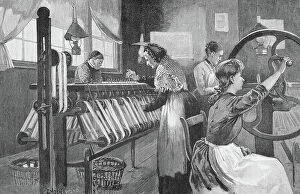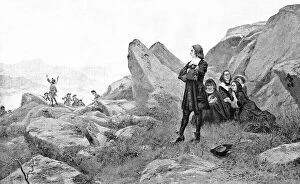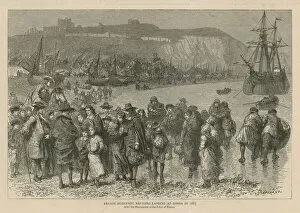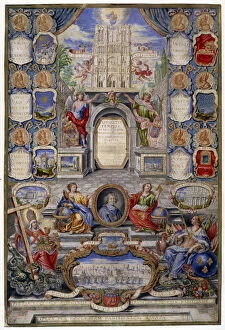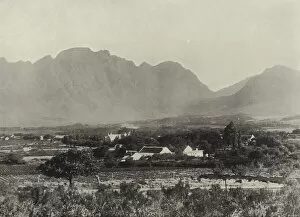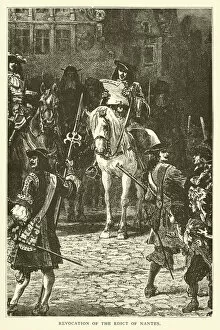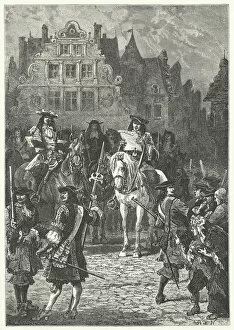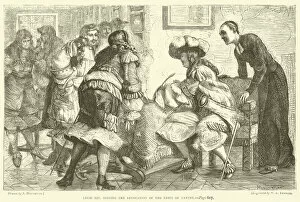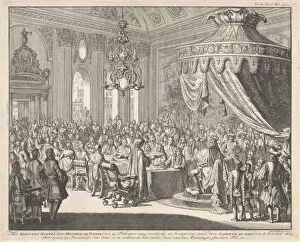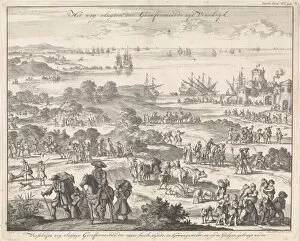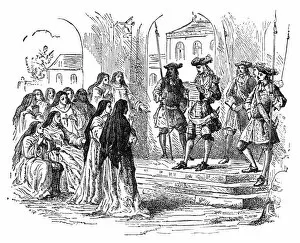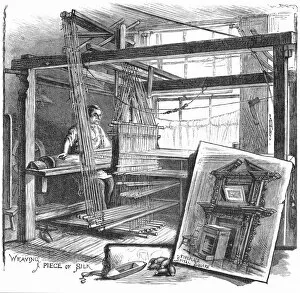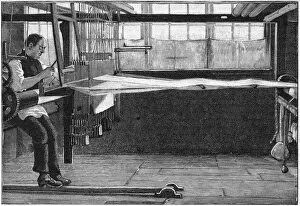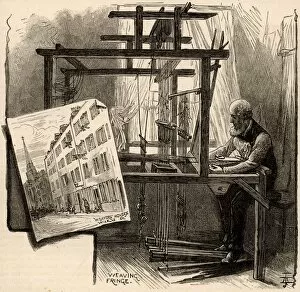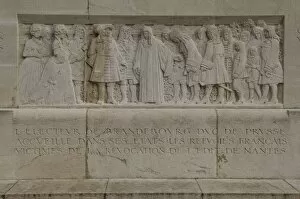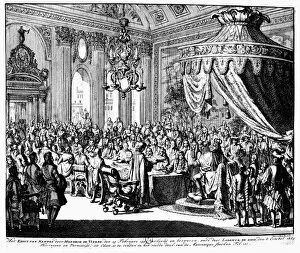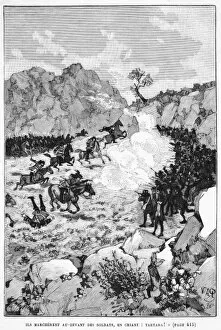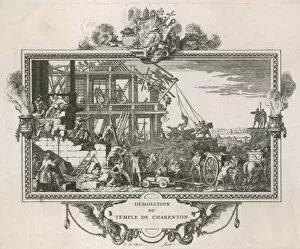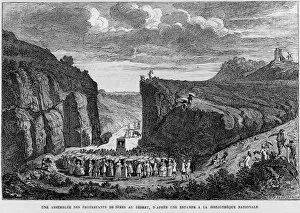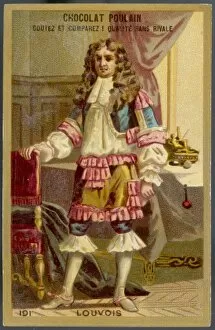Revocation Collection
"Revocation: A Dark Chapter in History" In the year 1685, a significant event unfolded that would forever alter the lives of many
All Professionally Made to Order for Quick Shipping
"Revocation: A Dark Chapter in History" In the year 1685, a significant event unfolded that would forever alter the lives of many. The Revocation of the Edict of Nantes, signed by Louis XIV, marked a turning point for religious freedom and tolerance in France. Engraved depictions vividly capture the scenes surrounding this historical moment. One such engraving portrays French Huguenot refugees landing at Dover in England, seeking solace from persecution. Their arrival symbolizes hope amidst despair and highlights the impact on countless lives. An allegorical representation showcases the Church of Paris during this tumultuous time. It serves as a poignant reminder of how religious institutions were affected by this decision – their unity shattered by intolerance and division. The black-and-white photograph featuring French Hoek further emphasizes the consequences faced by those who refused to conform to Catholicism. This visual cue invites contemplation on individual struggles against an oppressive regime. A thought-provoking cartoon depicts a husband held responsible for his wife's beliefs – an illustration that underlines how personal freedoms were curtailed during this era. Such societal dynamics reveal the far-reaching implications brought about by revocation. Fac-similes of medals struck in honor of this event showcase both celebration and condemnation. These engravings encapsulate conflicting sentiments within society – some rejoicing over increased orthodoxy while others mourned lost liberties. Lithographs depicting Protestant fugitives fleeing persecution serve as haunting reminders of forced displacement caused by revocation. Families torn apart, communities uprooted; these images bear witness to human suffering resulting from religious intolerance. Another engraving captures Louis XIV himself signing away religious freedom with his signature upon parchment paper - an act that sealed the fate for thousands who dared to practice their faith openly. Lastly, we glimpse into history through an image portraying Holy Roman Emperor Henry IV at an entrance - perhaps serving as a cautionary tale about the dangers of religious persecution and its potential consequences.

